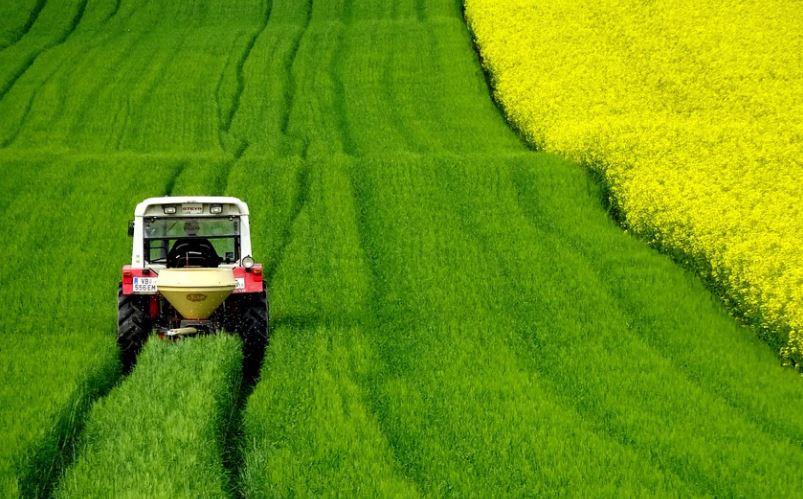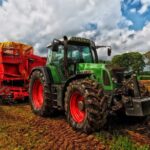Are you interested in harvest equipment? Then you are in luck because we’ll be sharing with you different types of harvest equipment used by modern farmers. From high-tech combined harvesters to simple tools, the various kinds of gear available can meet the needs of small-scale homesteaders and industrial-size farming operations alike.
When it comes to farming, harvesting, or all agricultural-related work on a big scale, there is special equipment involved in the process.
If you’ve ever wondered about how what is needed or required for harvesting, you’ll probably hear about combines, also known as harvesters. These machines work in the field of the agricultural industry and contribute to the cutting of crops. Scroll down to learn more about the world of harvesting and what is needed for this important task.
Harvest Equipment FAQs
What is harvesting?
It is the operation of cutting, picking, plucking, and digging or a combination of these operations to remove the crop from under the ground or above the ground or remove the useful part or fruits from plants.
How is harvesting done?
Harvesting action can be done in four ways:
- Slicing action with a sharp tool.
- Tearing action with a rough serrated edge
- High-velocity single element impact with a sharp or dull edge.
- Two elements scissors-type action.
Manual harvesting involves slicing and tearing action. Harvesting can be done by manually operated tools, animal-drawn machines, and mechanically operated machines.
What is the equipment used for harvesting?
Some of the equipment involved in harvesting includes:
- Mower: It is a machine to cut herbage crops and leave them in a swath.
- Reaper: It is a machine to cut grain crops. The machine consists of a frame, cutter bar, knife, wheels, bearings, and other attachments.
- Sickle: It is a curved steel blade with a handgrip used for harvesting manually. It is a simple harvesting tool. It is used for harvesting crops and cutting other vegetation. It essentially consists of a metallic blade and a wooden handle.
- Windrower: It is a machine to cut crops and deliver them uniformly in a row.
- Tea leaf harvester: This is the harvesting machine used to pick and collect tea leaves from plants, reducing labor cost and time.
- Maize/corn harvester: Cob is stripped from its stalk without any damage with the help of Maize/corn harvester.
- Palm harvester: It helps cut and collect all fruit bunches without damaging the fruit.
Which machine is used for harvesting and threshing?
A combine is a farm machine that is used for harvesting and threshing. It is designed to harvest, thresh, separate, clean, and collect grains while moving through standing crops.
Grain farmers require combines, also known as harvesters or combine harvesters, that help to harvest their crops efficiently. Even small-scale grain farmers can benefit significantly by using a combine.
What are the main functions of a combine?
These massive pieces of machinery use a complex system of gears, blades, belts, and wheels to turn cereal crops into grain. Combines accomplish this through three primary processes:
- Reaping: Reaping is the process of cutting the plant, which is accomplished by the header, reel, and cutter bar on the combine. The header gathers the crops while the reel pushes them toward the cutter bar, which cuts the crops at their base.
- Threshing: Threshing is the process of separating the edible parts of the crop from the non-edible parts. This is accomplished by the threshing drum, which beats the cut crops to separate the grains from their stalks.
- Winnowing: Winnowing is the process of separating light chaff from the grain, and it is usually accomplished while the grain is in the threshing drum. Chaff is traditionally separated from the grain through the use of sieves.
What Types of Harvest Equipment are there?
Three significant types of combine harvesters are currently in use:
- Self-propelled: These wheeled harvester machines are excellent for farms with hard soil. They are the standard type that is used commonly in India.
- Track: These are fitted with tracks instead of wheels. They are very efficient in areas where wheels are likely to get bogged down. Track combines are commonly used to harvest rice and other crops from wetlands.
- Tractor Mounted: These harvesters are driven by tractors that are mounted on top of them. They work best on lands where the soil is loose, and the farmed area is extensive. Interested in another type of tractor? How about a plow tractor, and although it’s not a tractor, a post-hole digger is always a must-have.
Harvest Equipment
S780 Combine
Designed for performance in coarse grain crops, the TriStream™ rotor and Dyna-Flo™ Plus cleaning shoe efficiently thresh and clean grain in harsh harvesting conditions.
The TriStream rotor helps maximize fuel efficiency with technology that reduces the force required to move material through the combine by as much as 20 percent.
High capacity starts at the feeder house, where the S Series provides large clearance areas for high volumes of the crop to flow uninterrupted.
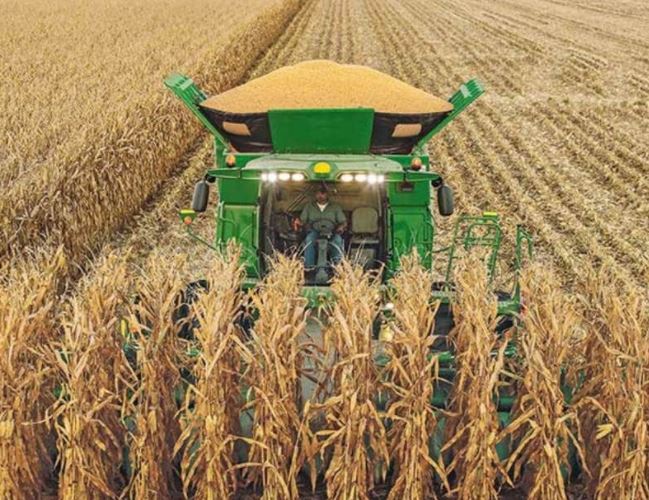
Features:
- Fully automated yield sensor calibration
- High-capacity harvesting in corn and beans
- Comfort and in control
CH570 Sugar Cane Harvester
A powerful hydraulic-piston motor drives the 380-mm (15-in.) differential chopper fitted with six, eight or ten 95-mm (3.75-in.) blades.
The externally mounted bearings are simple to replace. The chopper shafts have no splines to wear, and they can easily slide out from the side for service.
The CH570’s reliable cleaning system yields the cleanest cane in the industry. Cleaner cane, less billet loss, and less downtime will bring more profit.
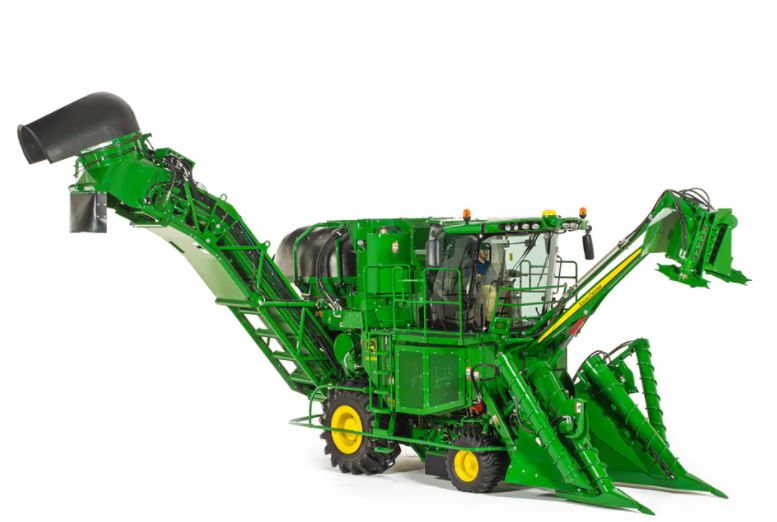
Features:
- Harvest Monitor
- Cleaning system
- Floating crop divider technology
Brush Clearing Sickle
Brush clearing sickle with 9″ aluminum handle and 9″ Sk5 Japanese high carbon steel blade. They are designed for heavy-duty clearing and scrubbing tough vines, weeds undergrowth, and small saplings.
Features black soft rubber grips, and the 9″ aluminum tube allows maximum leverage and force.
Razor-sharp 9″ carbon steel straight edge hooked blade provides powerful cuts on stems, stalks, and branches. It also makes a great knife for harvesting various fruits, berries, and vegetables.

Features:
- Soft rubber grips
- Aluminum tube handle
- Carbon steel
1550 TerrainCut™ Front Mower
Liquid-cooled, 3-cylinder diesel engines power the 1500 Series TerrainCut™ Front Mowers.
These engines feature low exhaust and emissions, reduced noise levels, and excellent fuel economy. They also meet the necessary Environmental Protection Agency (EPA) Tier 4 emissions requirements.

Features:
- Rear Discharge Deck
- Diesel Engine
- Easy to operate
W200M Windrower
The W200M and W235M Self-Propelled Windrowers come with a cab that offers a comfortable and quiet working environment with plenty of visibility, storage, and features.
The CommandARM console provides the operator with unmatched control of the windrower and platform.
Controls are designed and positioned to enhance ergonomics and quickly locate and use. Operators will appreciate the look and feel of the control console in the windrower.
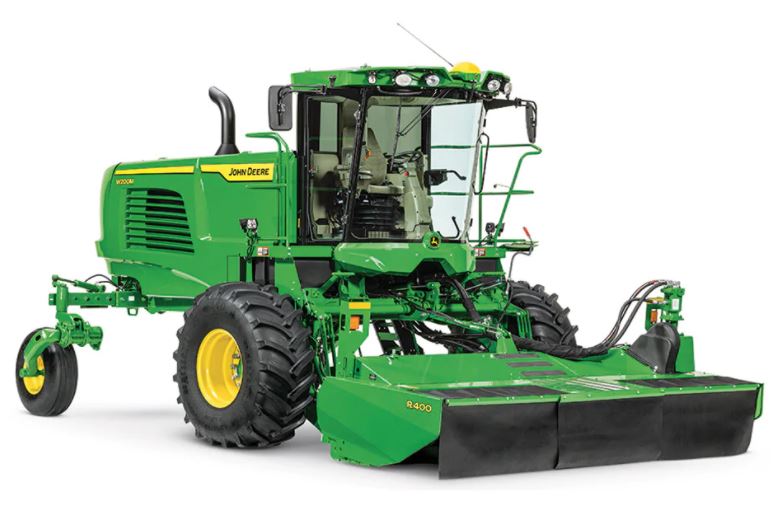
Features:
- Integrated AutoTrac
- Faster cutting speeds
- 200hp

